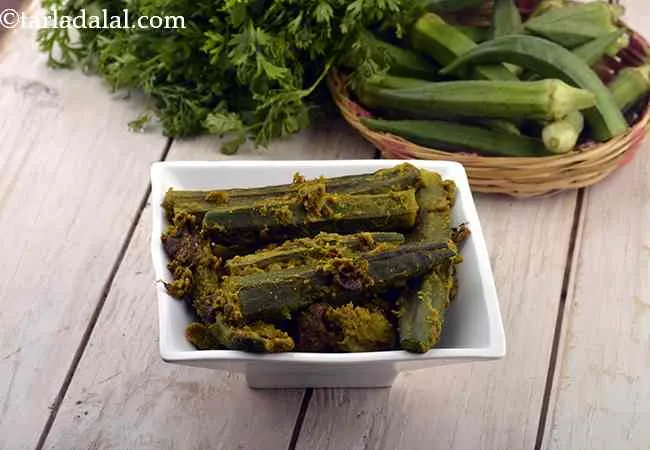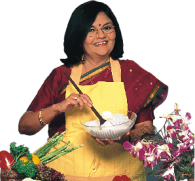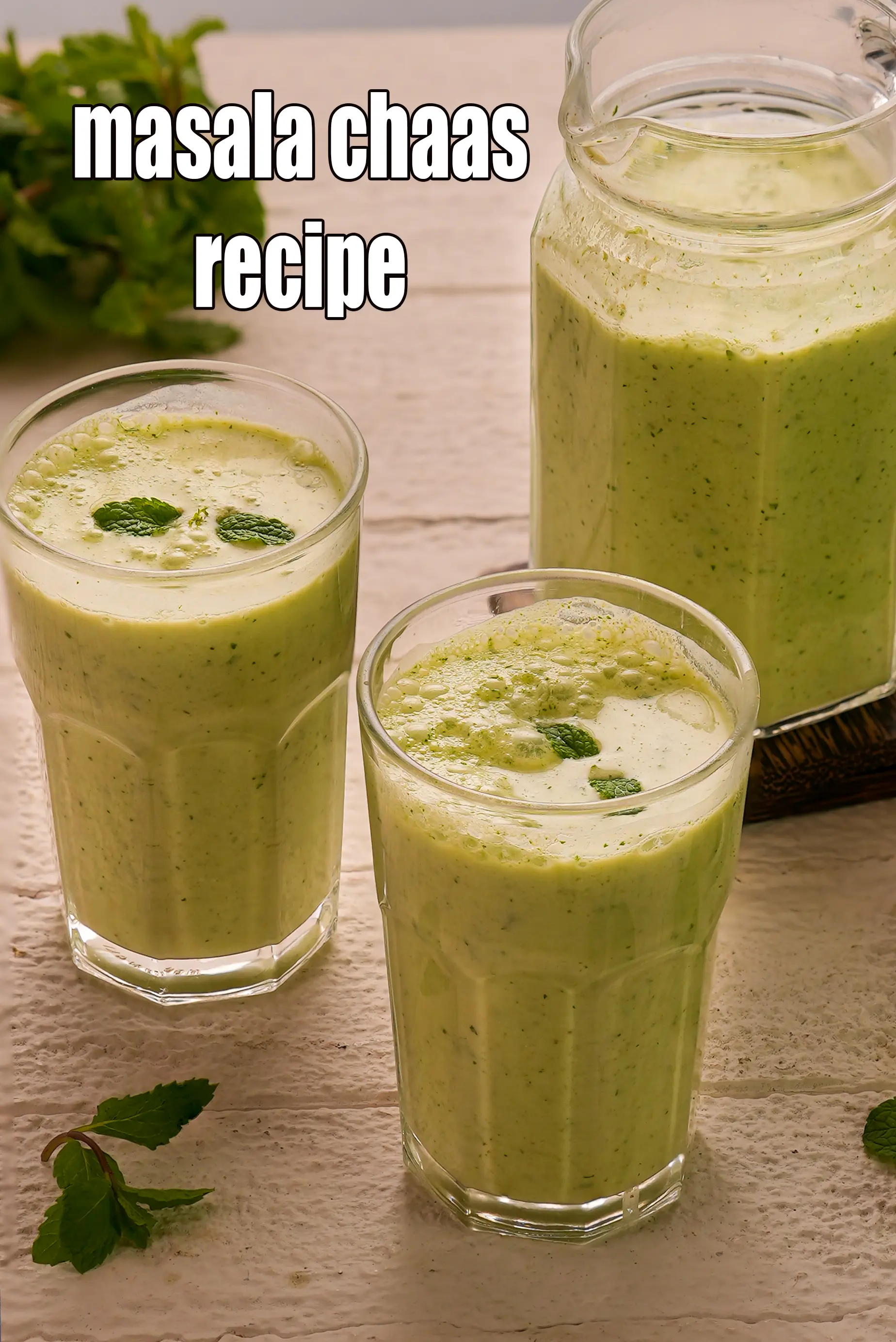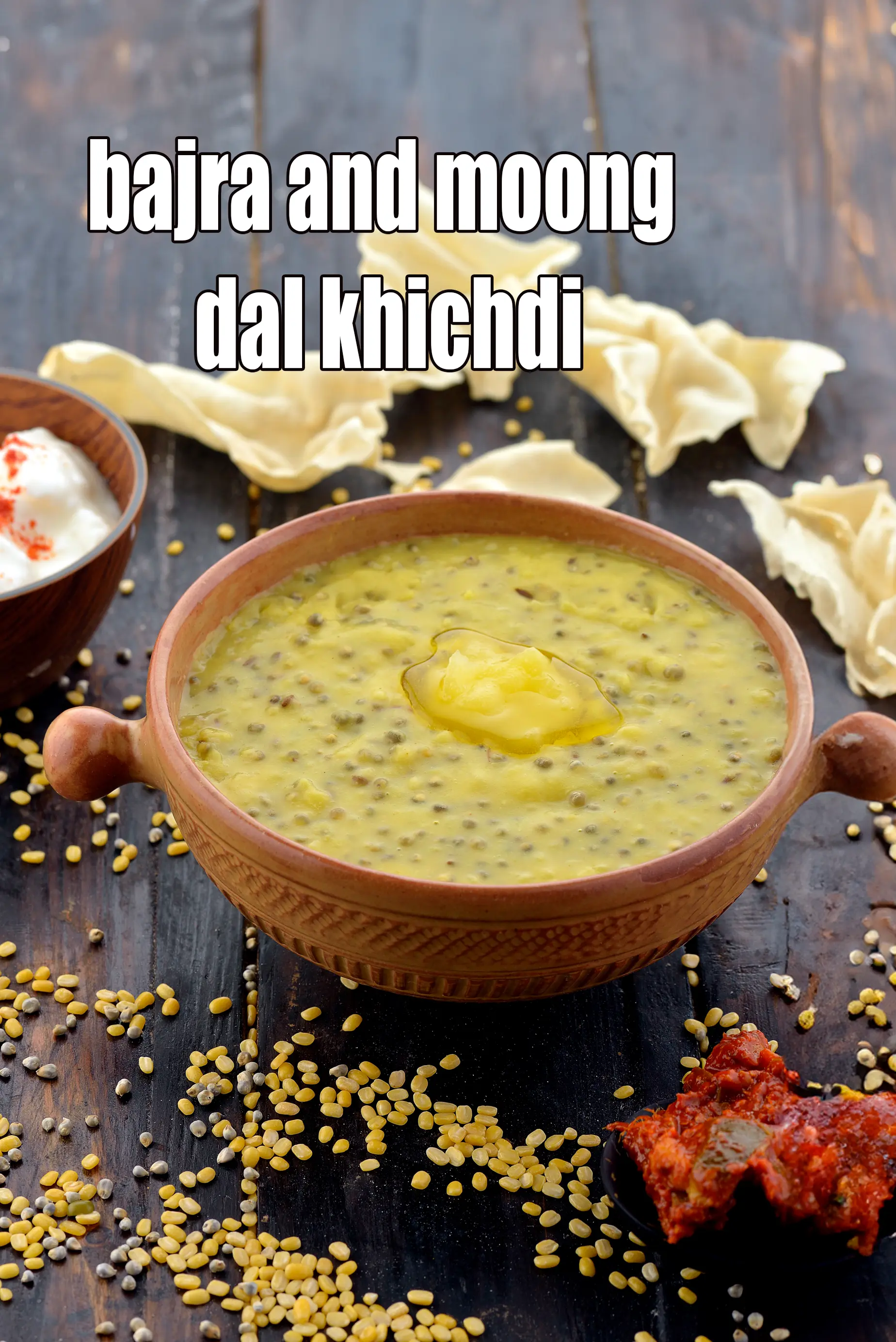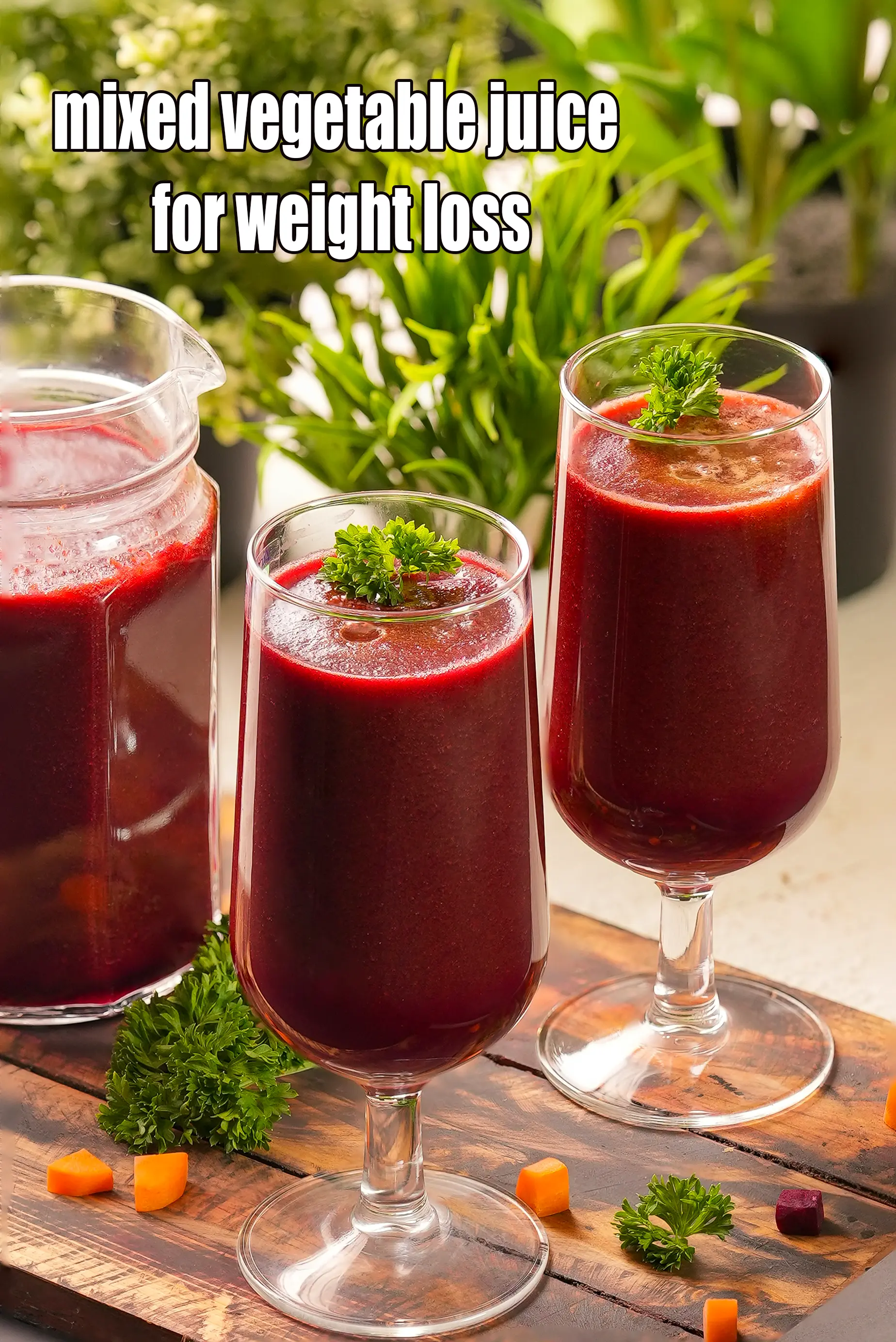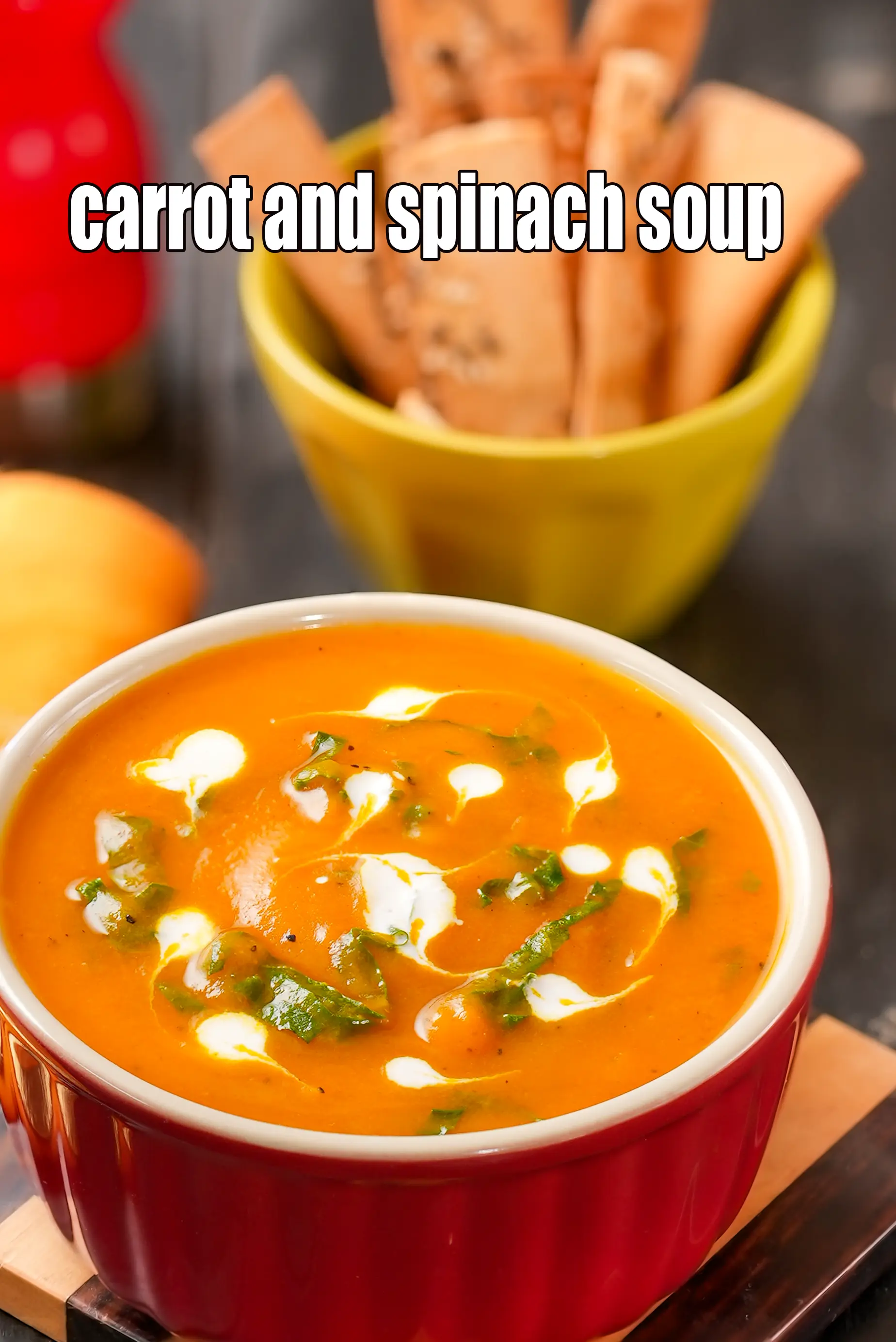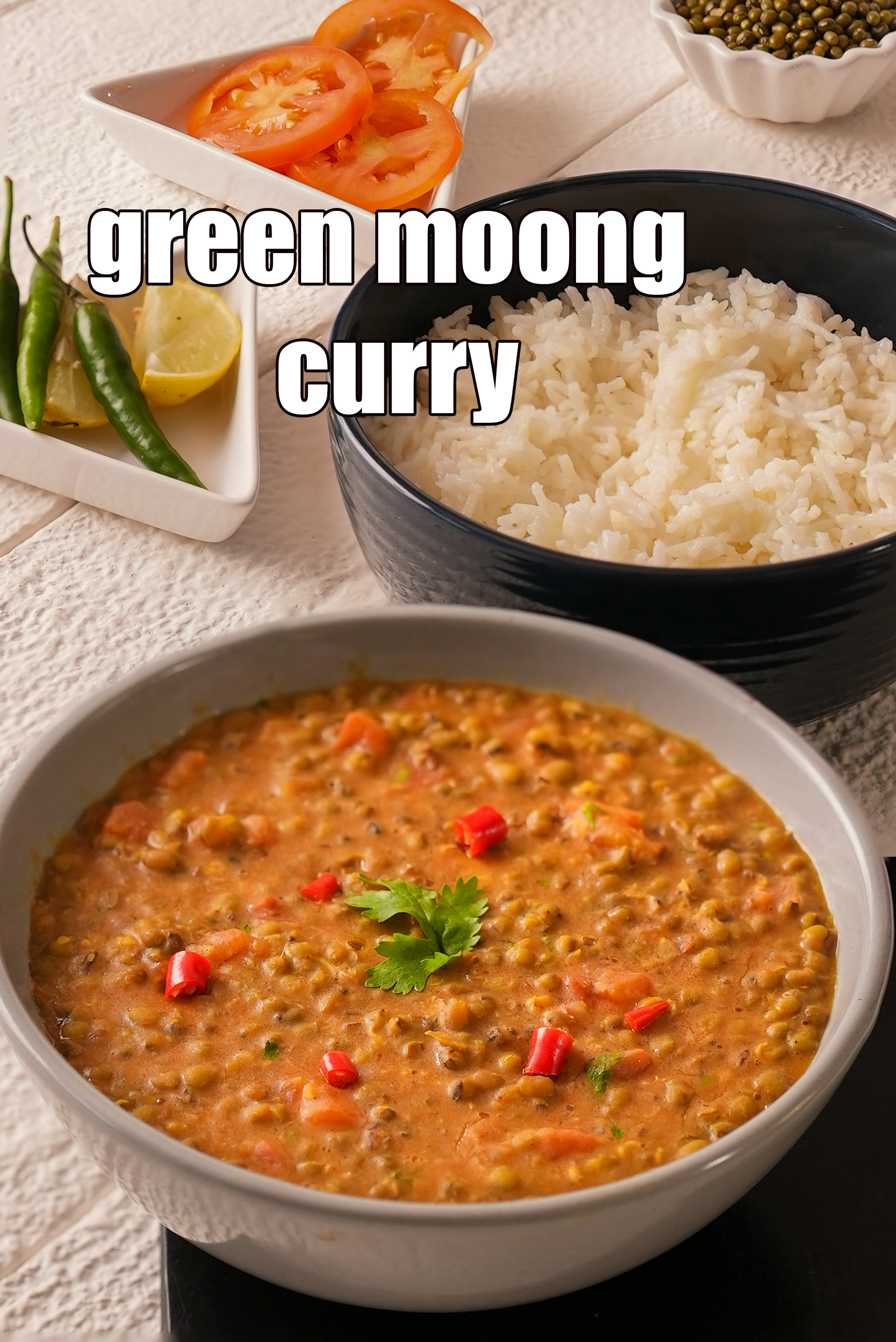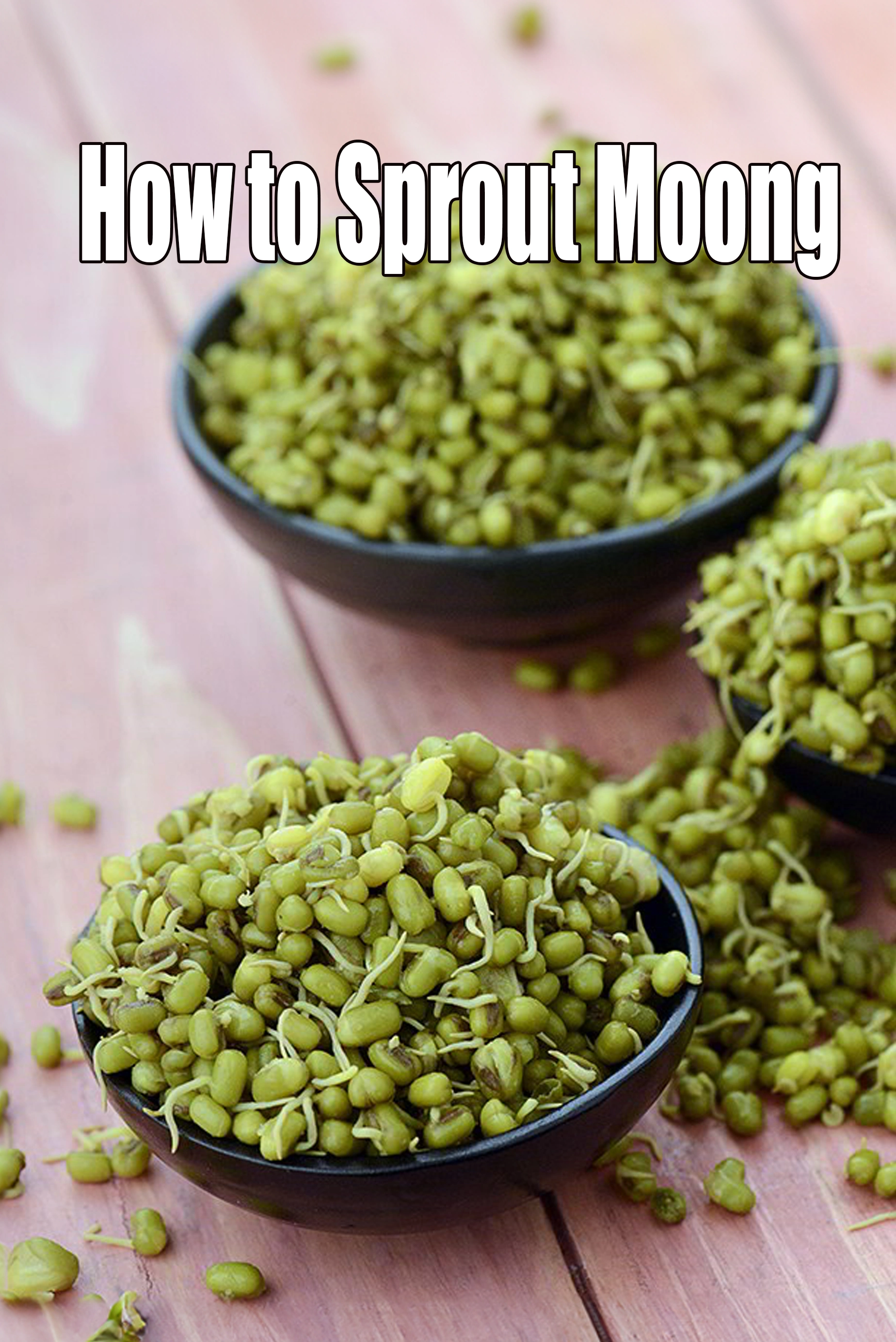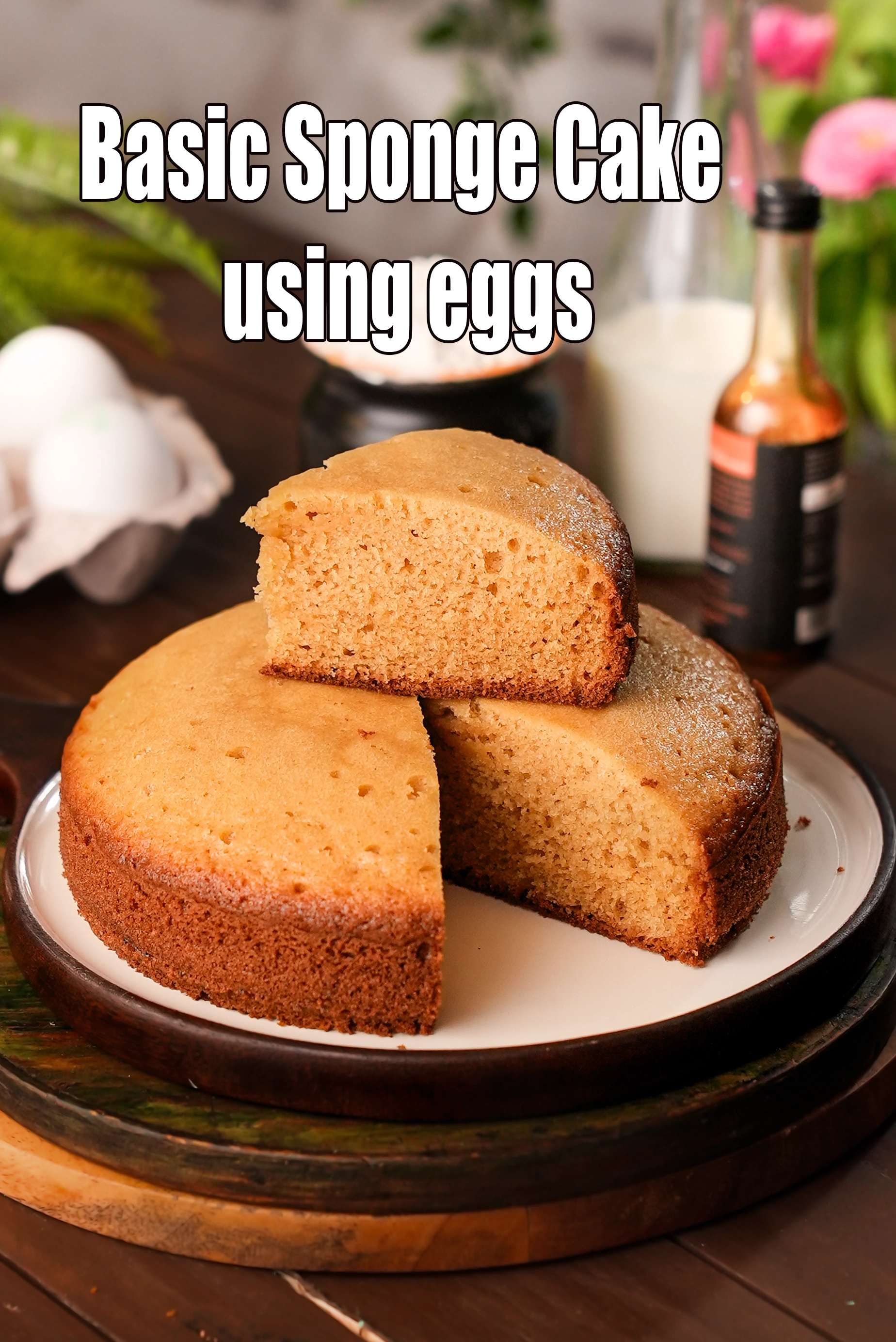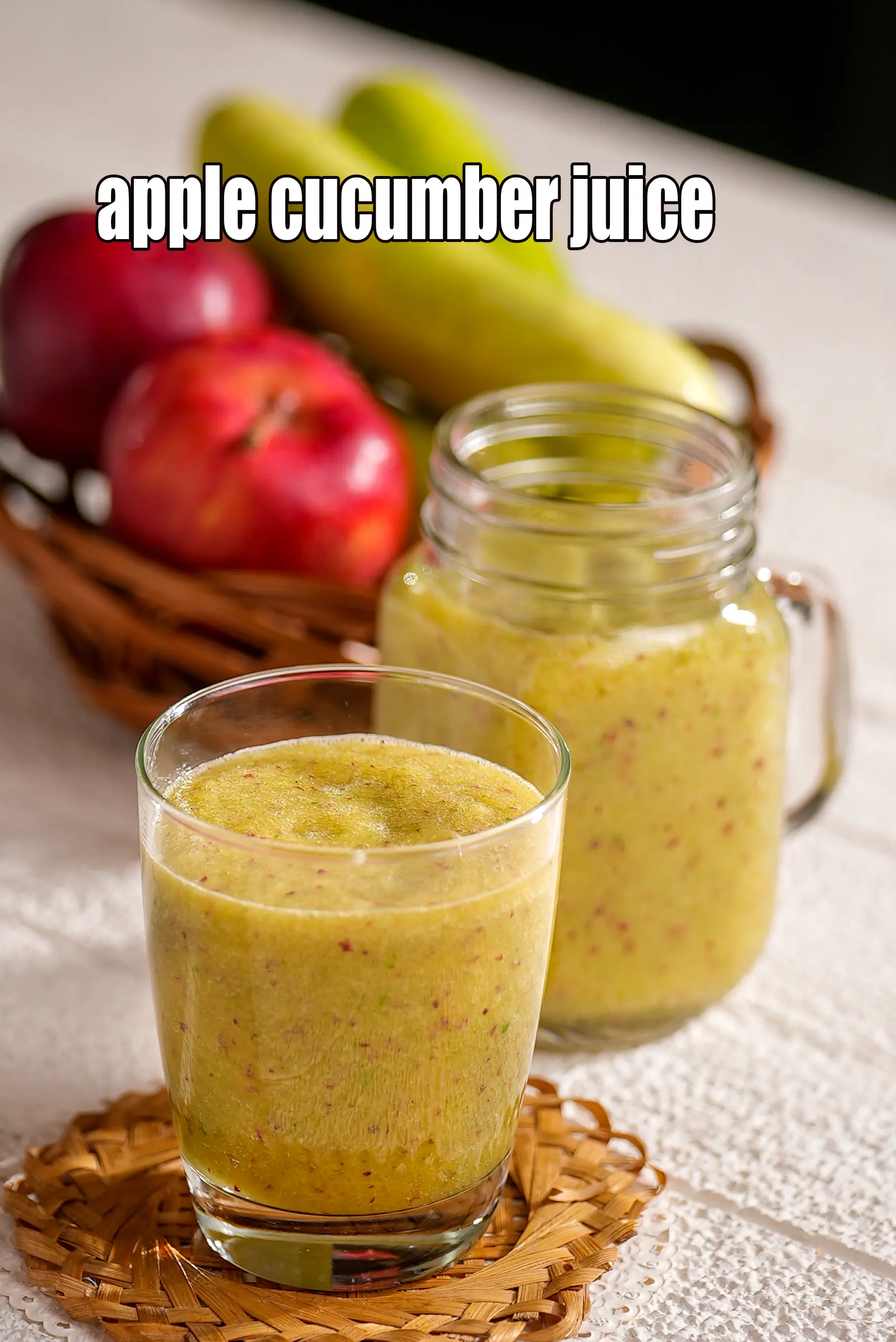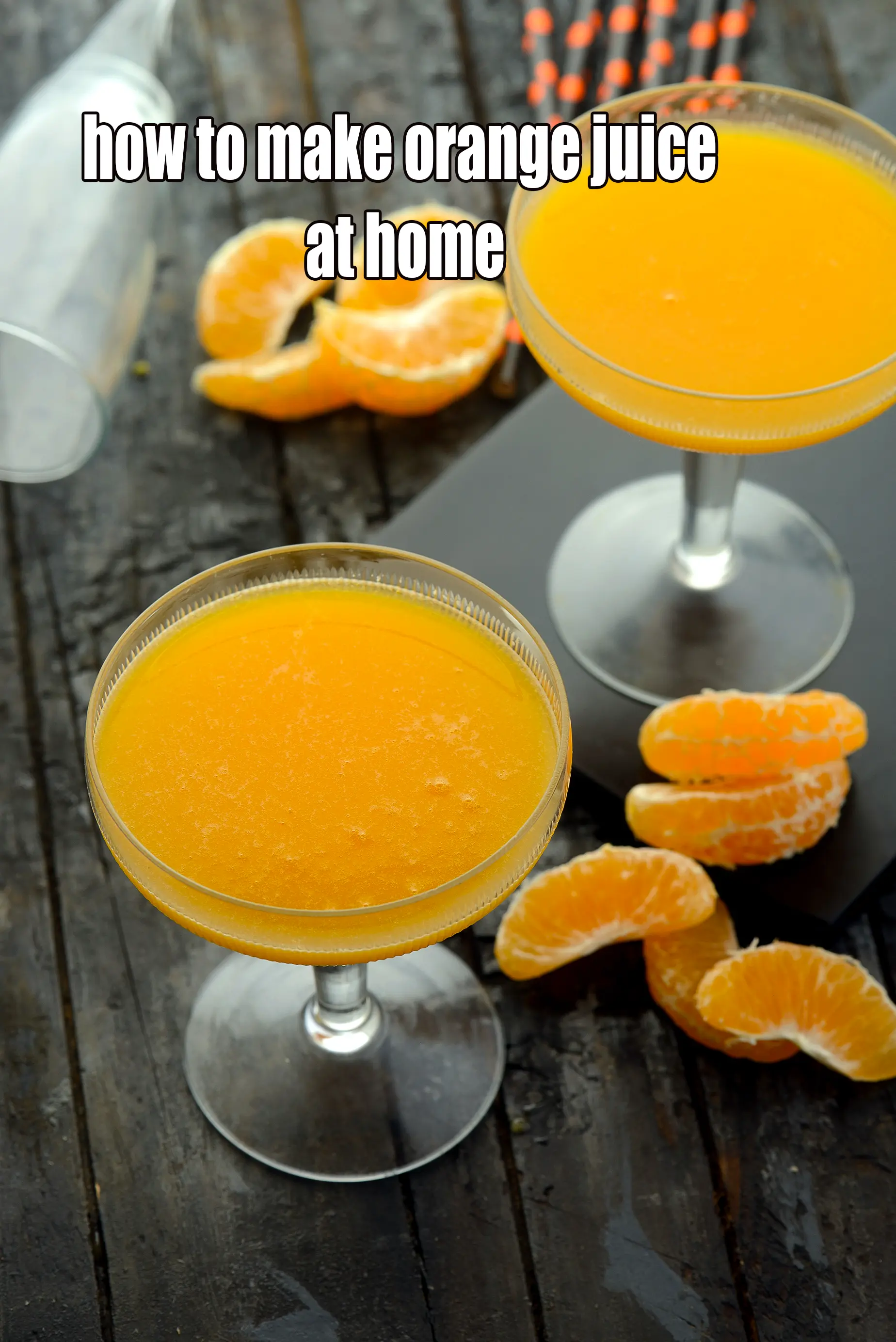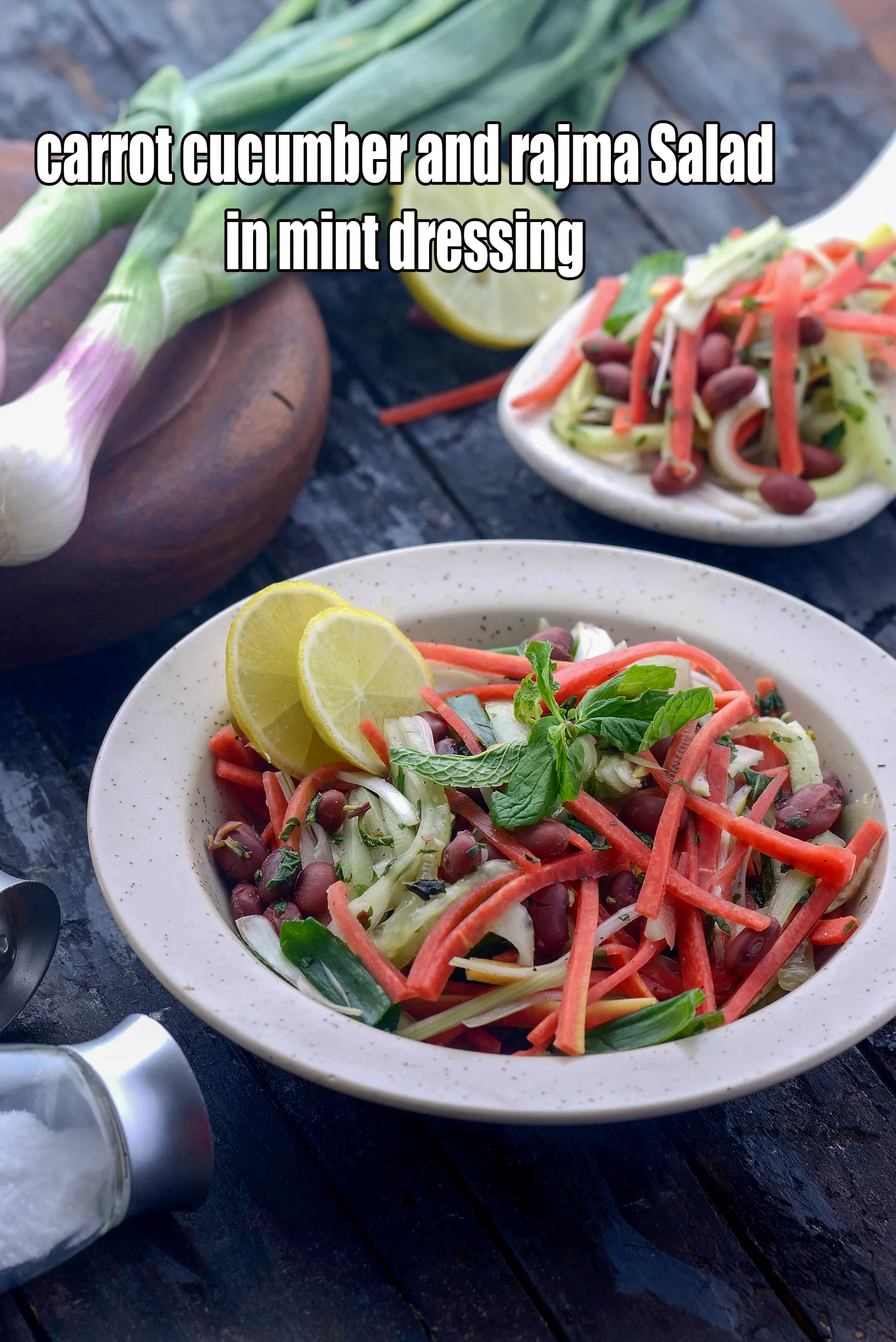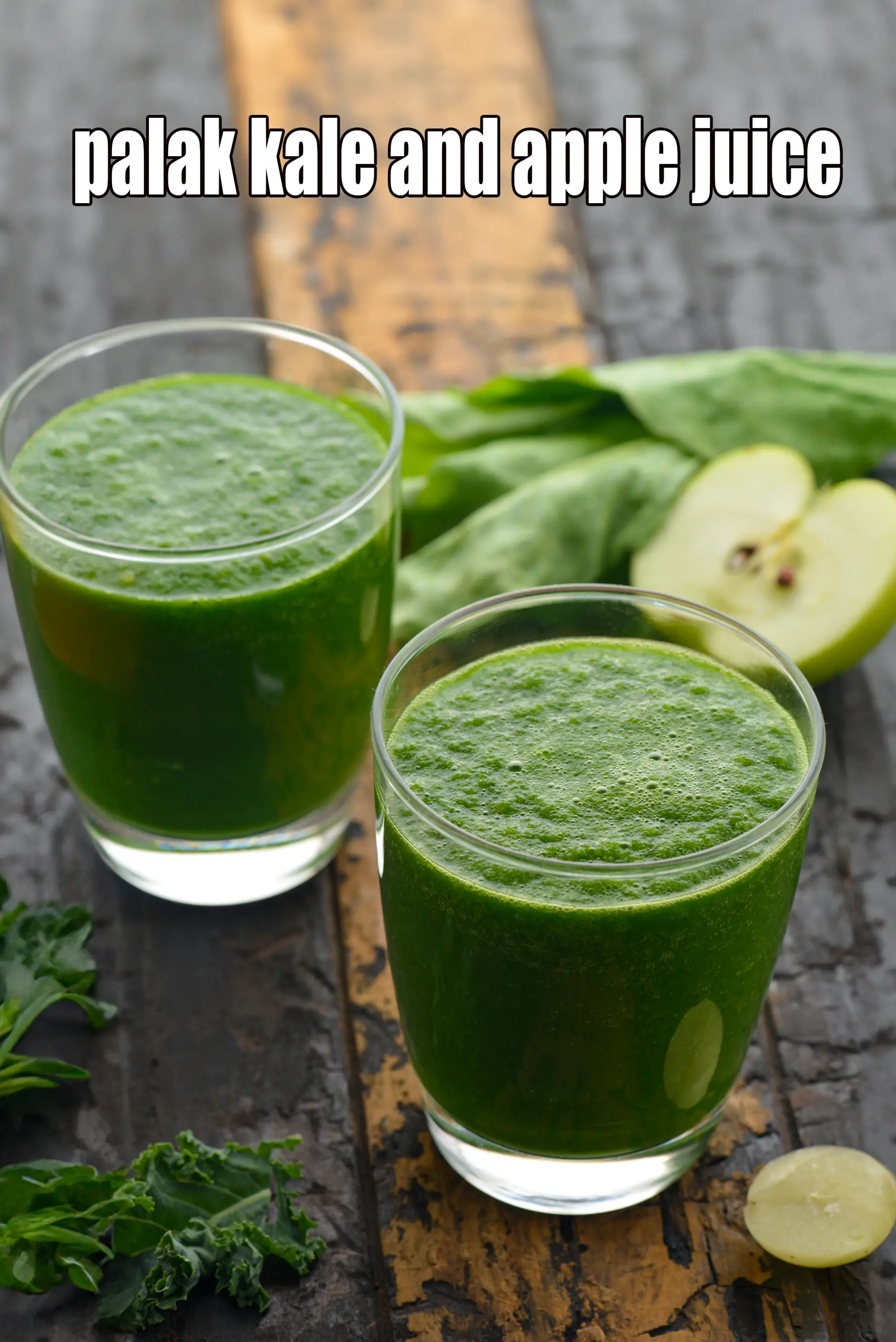Nutritional Facts of Kamal Kakdi ki Subzi, Calories in Kamal Kakdi ki Subzi
This calorie page has been viewed 12880 times
Table of Content
How many calories does one serving of Kamal Kakdi ki Subzi have?
One serving of Kamal Kakdi ki Subzi gives 167 calories. Out of which carbohydrates comprise 25 calories, proteins account for 5 calories and remaining calories come from fat which is 137 calories. One serving of Kamal Kakdi ki Subzi provides about 8 percent of the total daily calorie requirement of a standard adult diet of 2,000 calories.
Click here to see Kamal Kakdi ki Subzi recipe. Lotus stems taste very similar to water cress (singoda), and acquire an exotic flavour in this innovative gravy which combines tomatoes and brinjal. The roundels look like pretty small wheels, adding visual appeal also to this tasty dish!
Is Kamal Kakdi ki Subzi healthy?
Yes, this is healthy. But quantity restrictions apply.
Let's understand the Ingredients of Kamal Kakdi ki Subzi.
What's good in Kamal Kakdi ki Subzi.
lotus stem, kamal kakdi :They are very rich in iron, which is required for RBC formation in blood. There is good amount of calcium also present, required for maintenance and repair of bones and teeth. Lotus stem is high in dietary fiber. It is highly recommended for pregnant women and people with chronic complain of constipation. The chlorophyll present in the stack acts as active anti oxidant to fight against cancer producing free radicals.
Brinjal (baingan, eggplant) : Foods like Brinjal have a low glycemic index and good for weight loss. Brinjals are a very good source of fibre. It also prevents blood glucose from shooting up and is good for diabetics. Brinjals are rich in folate, which is required for producing Red Blood Cells (RBC’s) and also helps to prevent anaemia. See all the 7 amazing benefits of baingan.
Tomatoes : Tomatoes are extremely rich source of Lycopene. Tomatoes are a powerful antioxidant, super rich in Vitamin C, good for heart. Tomatoes are a Pregnant women's friend and are rich in Folate or Folic Acid which helps your body to produce and maintain new cells, especially red blood cells. Read about 13 amazing benefits of tomatoes.
Cloves : Cloves are the immature unopened flower buds of a tropical tree. The four-pointed flower bud with a tapered stem measures 12-16 mm, and looks like a small nail. Indians have long used cloves to treat indigestion, diarrhoea, hernia, and ringworm, as well as athlete's foot and other fungal infections. India's traditional Ayurvedic healers have used cloves since ancient times to treat respiratory and digestive ailments and its oil for toothache. It has powerful antiseptic and mild anaesthetic actions. When boiled with water and gargled, cloves are a good antibacterial mouthwash, which can help to combat bad breath and relieve a sore throat. Cloves are said to restore the appetite, and hence recommended for people with digestive disorders. Cloves are effective at clearing up a number of skin disorders such as acne, sores or ulcers. It has antioxidant properties, owing to the compound eugenol in it. Eating cloves is said to be aphrodisiac.
Benefits of Bayleaf (Tejpatta) : The properties of bayleaves make it useful for treating high blood sugar, migraine headaches, bacterial and fungal infections, and gastric ulcers. Bay leaves and berries have been used for their astringent, carminative, diaphoretic, digestive, diuretic, emetic and stomachic properties. Bayleaf contains eugenol, which has anti-inflammatory and antioxidant properties. Bay leaf is also antifungal and antibacterial. Traditionally, it has been used to treat rheumatism, amenorrhea, and colic pains.
Turmeric Powder (Haldi): Turmeric helps in digestion of food thus helping to overcome indigestion. Haldi may help in reducing the growth of fat cells in the body. Turmeric, being rich in iron, is highly valuable in the treatment of anaemia and both the root as well as the powder should be a regular part of an anaemic diet. One of the health benefits of turmeric is it’s anti-inflammatory property due to the active compound, Curcumin, which helps to relieve inflammation of the joints and thus is a ladder to relieve pain related to arthritis. The curcumin in haldi also helps to ward of the bacteria’s causing cold, cough and throat irritation. Turmeric benefits in diabetes management by lowering blood glucose levels. Its antioxidant and anti-inflammatory effects are useful in the treatment of diabetes patients. It is known to be a good brain food and keep diseases like Alzheimer’s at bay. See here for detailed turmeric benefits.
Coriander (kothmir, dhania): Coriander is a fresh herb often used as a flavour enhancer in Indian cooking. It is mainly used as a garnish. This is the best way to use it - no cooking. This preserves its vitamin C content which helps to build our immunity and bring that sparkle to the skin. The antioxidants vitamin A, vitamin C and the quercetin present in coriander works towards strengthening our immune system. Coriander is a fairly good source of iron and folate – the 2 nutrient which help in the production and maintenance of red blood cells in our blood. Good for reducing cholesterol and good for diabetics. Read 9 benefits of coriander to understand details.
Benefits of Cumin powder ( jeera) : The most common benefit of jeera known to many is to soothe the stomach, intestine and the entire digestive tract. Cumin powder are apparently a very good source of iron. A tbsp. of cumin seeds can fulfil nearly 20% of days iron requirement. Even small quantity of cumin seeds has huge amounts of calcium – a bone supporting mineral. They aid is digestion, weight loss and help reduce inflammation.
Red chilli powder : Red chilli powder can set the taste buds on fire, and sometimes the tummy too! It is basically a spice blend consisting of one or two types of dried red chillies that are ground and pulverized into a fine powder. It is generally used to add spice to otherwise bland foods.
Onions (pyaz, kanda) : Raw onions are a very valuable source of vitamin C – the immune building vitamin. Along with other phytonutrients from onions, it helps to build WBC (white blood cells) which serves as a line of defence against illness. Yes, it’s a source of many antioxidants, the most important one amongst them being Quercetin. The quercetin in Onions promotes production of HDL (good cholesterol) and lowers total cholesterol in the body. The sulphur in onions act as a blood thinner and prevents blood clotting too. This in turn would lower blood pressure and good for heart, diabetics. Read the benefits of onions.
Ginger (Adrak) : Ginger is an effective cure for congestion, sore throat, cold and cough. It aids digestion and relieves constipation. Ginger was found as effective as drugs in relieving menstrual pain. Ginger is effective in decreasing the cholesterol levels in patients with high cholesterol. Ginger significantly reduces symptoms of nausea in pregnant ladies. See here for 16 Super Health Benefits of Adrak, Ginger.
Garlic : Garlic has been proven to lower cholesterol. The active ingredient allicin present in garlic aids in lowering blood pressure. Garlic is also alleged to help regulate blood glucose levels for diabetics. Garlic is great for the heart and circulatory system. Garlic has an antimicrobial, antiviral and antifungal function and can help in relieving common cold and other viral infections. To boost your immune system have a garlic clove a day. Garlic is a top anti viral food. The thiosulphate compound, Allicin found in garlic acts as a strong antioxidant and protects our body from damage of free radicals. Read here for complete benefits of garlic.
What's problem in Kamal Kakdi ki Subzi.
Vegetable Oils : To some vegetable oil is only soyabean oil, while some promote it as a mix of oils like soyabean, canola, sunflower, corn and other omega-6 rich oils. These are often cheaper options than many oils, but they are highly processed oils. They are undoubtedly not to be reached out for, whether you are looking for salad dressings, sautéing or cooking. The 5 best oils used in cooking are olive oil (low temperature short time cooking), avocado oil, canola oil, coconut oil and peanut oil. You must read the super article to find the facts of which oil is the healthiest avoid vegetable oil.
Note : 1 cup = 200 ml (standard cup available in the market). The weight in grams varies for each ingredient.
Can diabetics, heart patients and over weight individuals have Kamal Kakdi ki Subzi ?
No for diabetics as lots of vegetable oil is used in this recipe, which is highly processed oil. Hence, this is not suitable for diabetics, heart patients and over weight individuals.
Here are some very healthy sabzis options like dahi bhindi ki sabzi recipe, mooli ki sabzi recipe, bhindi masala recipe.
Bhindi Masala
Can healthy individuals have Kamal Kakdi ki Subzi ?
Yes, they can have it, but in small quantity as 4 tablespoons oil is used in this subzi.
8 Pointers to get healthy on a Indian diet.
1. Eat healthy and say yes to good home cooked food. Prefer whole grains like oatmeal, quinoa, buckwheat, barley and healthy flours like bajra flour, jowar flour, quinoa flour, wheat flour etc. rather than refined ones like maida. Have healthy Indian fats like ghee, coconut, coconut oil in your diet.
2. Opt out of junk food, packaged food, deep fried foods. Prefer steamed snacks and other non-fried snacks. Check out some Healthy Indian Snacks. Remember to eat small frequent meals through the day as that will keep you always full and prevent your blood sugar from dropping. By starving your body through some diet, will not help you one bit. In fact, dieting will make you binge on 2 to 3 meals which is not good.
Skip having Indian junk foods like pav bhaji, bata vada, pakoras, gulab jamun as they cause your body to have insulance resistance. The resultant is your body will store more carbohydrates as fats, causing storage of fat in the stomach causing a paunch and slowing down of our fat burning process. So its a bad cyle which causes you more more hunger and fatigue every time you eat junk food.
3. Have 4 to 5 servings of vegetables and 2 to 3 servings of fruit&nb
| Energy | 167 cal |
| Protein | 1.2 g |
| Carbohydrates | 6.3 g |
| Fiber | 2.8 g |
| Fat | 15.2 g |
| Cholesterol | 0 mg |
| Vitamin A | 295.4 mcg |
| Vitamin B1 | 0.1 mg |
| Vitamin B2 | 0.1 mg |
| Vitamin B3 | 0.6 mg |
| Vitamin C | 18 mg |
| Folic Acid | 24.4 mcg |
| Calcium | 39.9 mg |
| Iron | 0.6 mg |
| Magnesium | 14.3 mg |
| Phosphorus | 39.1 mg |
| Sodium | 7.3 mg |
| Potassium | 161.9 mg |
| Zinc | 0.2 mg |

Click here to view Kamal Kakdi ki Subzi
Calories in other related recipes
